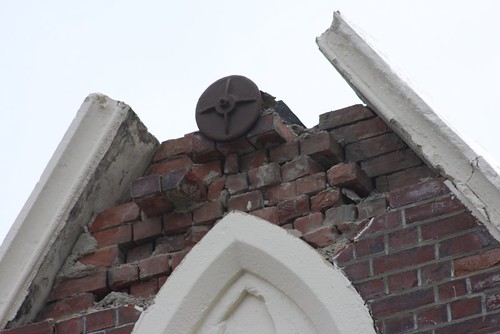No, not in any Gerry Brownlee way, but if there’s going to be any strengthening going on why mess with 30%? Why put all that kind of money into strengthening when to strengthen to 100% won’t cost another 70% but much much less?
These are the sorts of questions we need to ask of our local councils, and then, of course, we need to work out who is going to pay. Currently the building owners get lumped with the bill – but that’s a bit unreasonable. Falling architecture affects us all. How many people were killed on the streets of Christchurch from wayward facades, unhinging from buildings? How many buildings have caused neighbouring buildings to be uninhabitable? – and why? – because we have not thought about the consequences of not earthquake strengthening to 100% at a community level.
All this is aside from the economic benefits of heritage restoration and earthquake strengthening. The American Advisory Council on Historic Preservation, for exmaple, claims that “Rehabilitation of historic properties in Georgia during a five-year period created 7,550 jobs and $201 million in earnings.” English Heritage refers to research that estimates that “the indirect economic benefit [of] heritage tourism is responsible for £21bn of UK GDP annually.” They are also researching other tangible values provided by heritage architecture to those living among and visiting heritage sites.”
Heritage needs to be with us for the long haul. Let’s give it 100%.




Leave a Reply